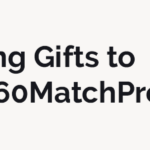Stop Relying on Excessive Outbound
In today’s evolving higher education landscape, simply “getting your message out there” isn’t enough. Student behavior is shifting, and institutions need to think strategically about their marketing efforts. If you focus too heavily on outbound marketing, you may not be aligning with how today’s students engage with institutions.
To make sure your goals stay within reach and your marketing initiatives remain on target, keep the following considerations in mind:
1. Student behavior is changing
A decade ago, higher ed marketers coined the term “stealth apps” to describe students who applied without inquiring or visiting first. They appeared to come out of nowhere, seemingly bypassing the traditional search process. Today, with the digital tools we have, those “stealth” applicants don’t have to be elusive anymore.
Students are more empowered and independent than ever in their search for the right program. They research, compare, and evaluate options long before they formally engage with your institution. It’s not enough to just push your message out there. The key is to be the most visible and valuable option when students are searching for programs. You want to show up where it counts—right when they’re actively looking.
2. Outbound can be high impact with the right strategy
Outbound marketing, including text messages, direct mail, and email outreach, plays an important role in the overall marketing mix. It’s a powerful tool for building awareness and can have a high impact, especially when strategically targeted at students who are already further along in their decision-making process.
While outbound marketing can sometimes be less cost efficient at the top of the funnel, it can shine in niche situations. For example, parents—key influencers in the undergraduate decision process— often appreciate traditional materials like a printed viewbook they can peruse. Outbound marketing can also be effective for degree programs with a specific focus. For instance, a graduate visual arts program might choose to send a beautifully printed portfolio featuring current student work and collaborations to its accepted student pool. This type of high-touch, niche outbound approach can create a lasting impression that digital alone can’t replicate.
Balancing these outbound efforts with strategic timing is crucial. While they can help generate awareness and affinity, you’ll see stronger results when you conserve resources for students who are lower in the funnel. This way, you can leverage the strengths of outbound without spreading your resources too thin.
3. Inbound media: high-intent lead sources
Inbound marketing, which uses channels such as search engine optimization (SEO) and paid search, is a powerful way to capture students when they’re actively looking for programs like yours. With so many options for degree types and institutions, students today are highly selective. At the same time, the pool of potential students is shrinking, making it crucial to capitalize on high-intent consumer behavior throughout the funnel.
Inbound strategies are incredibly effective for capturing students who are actively searching for higher education and comparing your programs with other institutions. It’s not just about showing up in search results; it’s about aligning with their specific intent. A strong search strategy can help you reach inbound students who are looking for exactly what you offer. Rather than simply searching for these prospects, remember that they are actively searching for you—which means you have the ability to engage in more meaningful and personalized conversations with your inquiries.
Once you’ve captured their attention, tactics like retargeting can keep the conversation going. By delivering personalized content or highlighting key benefits—such as standout faculty, student success stories, or unique industry connections—you stay on their radar during that critical decision-making period. Finding “lookalike audiences” can also help you expand your reach, by identifying potential students who resemble those already engaging with your programs. This allows you to scale your efforts while still keeping your message relevant and targeted. With a smart inbound strategy, you ensure your institution stays top of mind and builds the kind of connections that lead to better conversions.
In a time when students are searching more deliberately, it’s essential to shift your marketing mix to ensure you’re being seen and heard when it matters most. Outbound efforts still hold a lot of value, but a more balanced approach that capitalizes on the strengths of inbound can help maximize your resources.

Next in this series, we’ll explore how to evaluate which marketing strategies truly drive results and how to make sure personal preferences don’t overshadow data-driven decisions.
Jess Lanning began her career in higher education at a private university where she served as director of enrollment marketing on a record enrollment team. Over her decade-long career, she has focused on strategizing and implementing digital marketing campaigns as a senior vice president of strategy and senior partnership manager for higher education-specific agencies. In these roles, she served undergraduate, adult, and graduate audiences across the verticals of paid social, search engine marketing, search engine optimization, conversion rate optimization, digital PR, and user experience. Jess now serves as a Director of Digital Strategy at Liaison and we are very lucky to have her!
#Avoiding #Marketing #Pitfalls #1Too #Noise










